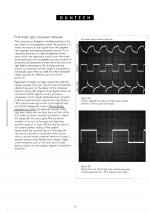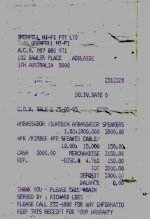Consider John Bau's use of a 4th order bessel low pass with a 1st order butterworth high pass:
Spica TC-60 loudspeaker Measurements | Stereophile.com
Spica TC-60 loudspeaker Measurements | Stereophile.com
Hmmmmm...........
I'd need to hear a shootout of same speaker, 6db high/low vs 6db low/24db high.
And I'd imagine the acoustic rolloff is a factor too.
24db (passive) has a bit of phase shift usually an octave and a half on one side of the crosdover point, but time aligned everywhere else is ok.
See time aligned 24db here.
Crossover demos
I know roy johnson (green mountain audio) was against them.
But lets not get into 24db vs 6db crossovers.
So 6.5" mtm crossing 2khz to 3" tweet will work ?
Norman
I'd need to hear a shootout of same speaker, 6db high/low vs 6db low/24db high.
And I'd imagine the acoustic rolloff is a factor too.
24db (passive) has a bit of phase shift usually an octave and a half on one side of the crosdover point, but time aligned everywhere else is ok.
See time aligned 24db here.
Crossover demos
I know roy johnson (green mountain audio) was against them.
But lets not get into 24db vs 6db crossovers.
So 6.5" mtm crossing 2khz to 3" tweet will work ?
Norman
Note that the the 24db time aligned is not at all the same as John Bau's crossover.
John's version can *almost* present a proper "step" response, with just a bit of lag transitioning from the tweeter to the midbass driver (..as seen in fig. 8).
It sounds like a 1st order (I've heard it and Dunlaveys), and the advantage for a MTM or TMM is that you can cut the combing from the extended upper freq. response of the midbass drivers. (..Dunlavey's always sounded off IMO when moving off of the very narrow vertical axis.)
I'd probably go down to 1.4 kHz (depending on the midbass driver).
TMM's got some nice peerlees drivers measured for lower freq. tweeter crossover:
Timothy Feleppa's Pages
(..I'd look at the smaller 1.5" cone tweeters from the group because of the better upper-freq. off-axis behaviour).
John's version can *almost* present a proper "step" response, with just a bit of lag transitioning from the tweeter to the midbass driver (..as seen in fig. 8).
It sounds like a 1st order (I've heard it and Dunlaveys), and the advantage for a MTM or TMM is that you can cut the combing from the extended upper freq. response of the midbass drivers. (..Dunlavey's always sounded off IMO when moving off of the very narrow vertical axis.)
I'd probably go down to 1.4 kHz (depending on the midbass driver).
TMM's got some nice peerlees drivers measured for lower freq. tweeter crossover:
Timothy Feleppa's Pages
(..I'd look at the smaller 1.5" cone tweeters from the group because of the better upper-freq. off-axis behaviour).
I've been looking real close at diysoundgroup's Apollo.
It is the mtm, 1,300hz crossover point, 24db slope, the wavecor waveguide loaded dome plus the remake of the anarchy audio woofers with shorting rings.
Denovo Audio Apollo MTM
like looking reeeeeeaaaaaalllllll close...............
It is the mtm, 1,300hz crossover point, 24db slope, the wavecor waveguide loaded dome plus the remake of the anarchy audio woofers with shorting rings.
Denovo Audio Apollo MTM
like looking reeeeeeaaaaaalllllll close...............
It's a nice design, but if you are looking for that 1st order sound then you'll need to look elsewhere.
true.
not many 6db time aligned mtm's out there like dunlavy sc1 or sm1.
I was thinking of combining my single capped morel (92db, down 6db @ 2khz) with a pair of peerless ne180w-8 (8ohm each, 86db, and copper cap making flat impedance for easy 6db crossover).
Those peerless have a deep magnet, so there would be a 1-2" deep rectangular cavity for the tweet needed to shift tweet back far enough. Felt would help but maybe not totally fix. My morel sits more than 2" behind my eminence b102 (with no inductor) for timish alignment.
not many 6db time aligned mtm's out there like dunlavy sc1 or sm1.
I was thinking of combining my single capped morel (92db, down 6db @ 2khz) with a pair of peerless ne180w-8 (8ohm each, 86db, and copper cap making flat impedance for easy 6db crossover).
Those peerless have a deep magnet, so there would be a 1-2" deep rectangular cavity for the tweet needed to shift tweet back far enough. Felt would help but maybe not totally fix. My morel sits more than 2" behind my eminence b102 (with no inductor) for timish alignment.
not many 6db time aligned mtm's out there like dunlavy sc1 or sm1.
Much easier to do if you get the XO way down in frequency.
dave
true, +/- 1/4 wavelength from center and you catch alignment (6db,24db).
The Apollo crossover point is @ 1,300hz or +/- 2.6", that helps..........
The Apollo crossover point is @ 1,300hz or +/- 2.6", that helps..........
Much easier to do if you get the XO way down in frequency.
dave
..easier yes, but you'll still end-up with lobing issues vertically depending on the distance between the midbasses and how close you get to the speaker. (..and its this area where the TMM is superior.)
Look at fig. 5 for the Dunlavy SC-1 which has about 6" between the two midbass drivers (at their closest distance from each other's frames). Within 10 degrees vertically it starts developing its null at 700 Hz. 😱
Dunlavy Audio Labs SC-I loudspeaker Measurements | Stereophile.com
(I've heard this speaker, and several others in the line - it was a disaster unless you sat in a very narrow vertical range, and even then - it still didn't sound quite right (..in particular height was limited, and the treble sounded "cheap"). Great depth though, as with most quasi 1st-order designs.)
Note that the woofers upper freq. response is "abreviated" from a true 1st order (2.5 octave spread from cross-point), not dissimilar from the Spica.
..easier yes, but you'll still end-up with lobing issues vertically depending on the distance between the midbasses and how close you get to the speaker. (..and its this area where the TMM is superior.)
As the wavelengths get longer wrt the XO point, lobing problems become less. At a quarter wavelength they have pretty much disappeared.
dave
..and this still leaves plenty of room for problems with most MTM designs vertically, as in figure 5 of the Dunlavy SC-I. 😉
You mean this Fig 5?
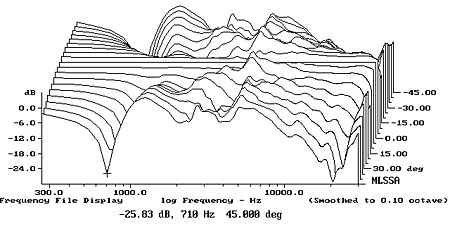
Not really. With a 3.5kHz XO the C-C between the 2 5” midranges would need to be about an inch.
I am thinking more like this where the C-C is under 12.75” and a quarter wavelength at the XO is 13.6”.
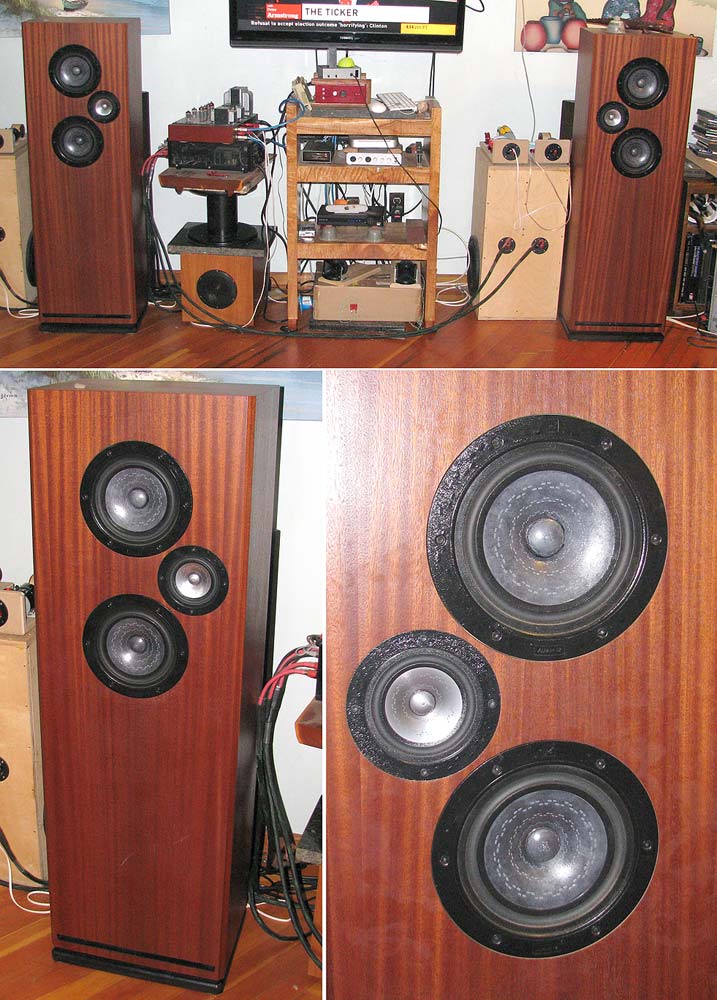
Or this TMM where C-C is 14” and the quarter wavelength at the XO is just under 19”.
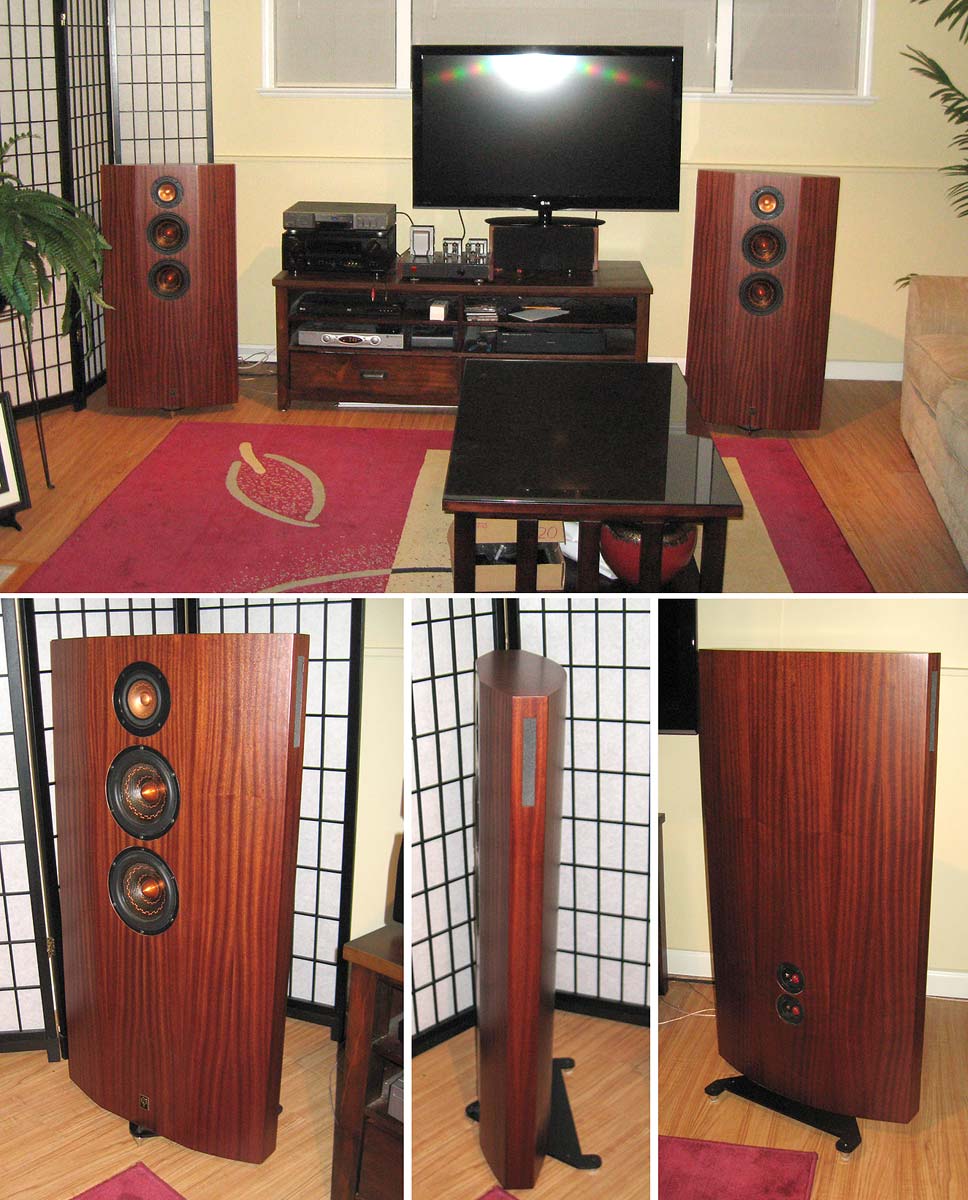
dave

Not really. With a 3.5kHz XO the C-C between the 2 5” midranges would need to be about an inch.
I am thinking more like this where the C-C is under 12.75” and a quarter wavelength at the XO is 13.6”.

Or this TMM where C-C is 14” and the quarter wavelength at the XO is just under 19”.

dave
Yea, i keep reading reviews on dunlavy sm1. 6.5" mtm (unknown crossover point). Its paper work recomends no less than 10'. A user recomended no less than 4m. People said over and over mr. Dunlavy stressed 10'.
Dunlavy Monitors
I remeasured, i'm 7' now from speakers.
The apollo mtm crosses 1.3khz. I agree, as a true point source mtm, a pair of 4's with 5" frames with a 2" framed tweet would look like a 12", think 1,200hz crossover point.
I had mtm's b4 (rat shack lineaum), excelent low volume sound but i know i was more than 7' away, couldn't tell you crossover point.
Here is a link to the apollo mt.
https://www.diysoundgroup.com/apollo-mt-kit.html
Norman
Dunlavy Monitors
I remeasured, i'm 7' now from speakers.
The apollo mtm crosses 1.3khz. I agree, as a true point source mtm, a pair of 4's with 5" frames with a 2" framed tweet would look like a 12", think 1,200hz crossover point.
I had mtm's b4 (rat shack lineaum), excelent low volume sound but i know i was more than 7' away, couldn't tell you crossover point.
Here is a link to the apollo mt.
https://www.diysoundgroup.com/apollo-mt-kit.html
Norman
Last edited:
Yea, i keep reading reviews on dunlavy sm1. 6.5" mtm (unknown crossover point). Its paper work recomends no less than 10'. A user recomended no less than 4m. People said over and over mr. Dunlavy stressed 10'.
John designed these speakers, Duntech Classic Series C500 - attached excerpt from the user manual. I am original owner for 23 years now.
MTM, drivers are 2x vifa p13wh-00-08 and seas excel t25cf001 tweeter.
Tweeter is phase reversed, XO is 5uF cap to the tweeter, mids run full range (there is some small value of series resistance <6ohms).
Document mentions 1kHz XO point, and 9-13 feet with 11.5ft considered as optimal (for this speaker).
Transparent, dynamic and easy to drive.
Hanze
Attachments
Last edited:
Ug.
That's a 5" driver crossing at 1khz, recommended 9 - 13' away.
I don't think a mtm with 6.5's would work well sitting at 7-8', even crossed @ 1,300hz.
Good thing i didn't go ahead and try my own, 6.5" mtm crossing @ 2khz (but 6db at least).
Thank you for the information.
Do you know why the tweeter was reverse phase ?
I thought it would need positive connection to woof and tweet on a 6db filter..........
I enjoy what i have, i just enjoy it much more further back (in the kitchen).
Norman
That's a 5" driver crossing at 1khz, recommended 9 - 13' away.
I don't think a mtm with 6.5's would work well sitting at 7-8', even crossed @ 1,300hz.
Good thing i didn't go ahead and try my own, 6.5" mtm crossing @ 2khz (but 6db at least).
Thank you for the information.
Do you know why the tweeter was reverse phase ?
I thought it would need positive connection to woof and tweet on a 6db filter..........
I enjoy what i have, i just enjoy it much more further back (in the kitchen).
Norman
..if you are within the vertical window, you might not notice anything "off" at a more reasonable (closer) distance.
On way to partially mitigate (subjectivly) this effect is placing them lower than the typical stand-mount height for being on the tweeter axis and then aiming them up (tilt-backward) at your listening position. (..this can also be useful for integration with the floor-bounce null.)
On way to partially mitigate (subjectivly) this effect is placing them lower than the typical stand-mount height for being on the tweeter axis and then aiming them up (tilt-backward) at your listening position. (..this can also be useful for integration with the floor-bounce null.)
Thank you for the information.
You're welcome.
As to why, I dunno - but I did connect it up in phase an it sounded too bright. Guess it just 'works better the other way'.
Also, reading back - I'm unsure as to whether the XO is 1kHz for purpose of his example (in context it could read that way), or with regard to the actual speaker itself. Never the less, these drivers have been around for a while and someone more inclined than myself (I simply dont know how, but would be interested to know...) should be able to work out the XO frequency based on driver spec and the detail outlined above, as before its just a 5uF cap..
Cheers, Hanze
Last edited:
TMM in a 2.5 configuration is a popular choice (over MTM), in my mind for the following reasons:
It is relatively simple to get T placed at seated ear level using a 90-100cm tall slim box, a TMT will need to be very tall or on a stand.
The 0.5 woofer can act as baffle step compensation simplifying filter design, while not sacrificing the sensitivity of the main woofer.
It is relatively simple to get T placed at seated ear level using a 90-100cm tall slim box, a TMT will need to be very tall or on a stand.
The 0.5 woofer can act as baffle step compensation simplifying filter design, while not sacrificing the sensitivity of the main woofer.
Last edited:
The morel solstice kit looks nice, a tmm not 2.5 way.
Kit is far less than total cost of seperate drivers.
I'm like 90% sure it is what I want, today anyway lol.
Kit is far less than total cost of seperate drivers.
I'm like 90% sure it is what I want, today anyway lol.
- Status
- Not open for further replies.
- Home
- Loudspeakers
- Multi-Way
- MTM - TMM Shoot Out

